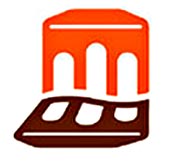- Asian Civilisations Museum
Infobox Museum
name = Asian Civilisations Museum
(亚洲文明博物馆)
imagesize = 150px
caption =
map_type =
map_caption =
latitude =
longitude =
established = bda|1997|04|22
dissolved =
location = 1 Empress Place
(coord|1|17|15|N|103|51|04|E)Singapore
type =Southeast Asian ,South Asian ,West Asia n andEast Asian Heritage
visitors =
director =
curator =
publictransit =Raffles Place MRT Station
(coord|1|17|3|N|103|51|05|E)Singapore
website = [http://www.acm.org.sg Asian Civilizations Museum]The Asian Civilisations Museum (ACM, zh-s|s=亚洲文明博物馆) is an institution which forms a part of the three
museum s of theNational Museum of Singapore . It is one of the pioneering museums in the region to specialise in pan-Asia n cultures and civilisations. The museum specialises in the material history ofChina ,Southeast Asia ,South Asia andWest Asia , from which the diverse ethnic groups of Singapore trace their ancestry.History
The museum first opened its doors at the
Old Tao Nan School building on22 April 1997 at Armenian Street, with exhibits largely centred on Chinese civilisation. With the restoration of theEmpress Place Building , the museum established its new flagship museum there on2 March 2003 , rapidly expanding the collection to other areas of Asia. The Armenian Street branch closed for renovations on1 January 2006 and reopened on25 April 2008 as thePeranakan Museum , specialising inPeranakan culture.On
September 16 2006 , the Museum officially launched its new logo with a new slogan "The Asian Civilisations Museum - Where Asian Cultures Come Alive!". This new logo reflects the museum's unique location by the historic Singapore River, the source and origin of Singapore multi-cultural society, which the ACM presents in its collection. The brown reflected image also alludes to the museum as a place for reflection, while the vibrant orange is an invigorating colour which represents activity and energy. [cite press release|title=The ACM logo|date=2006-09-13|publisher=Ancient Civilizations Museum|url=http://www.acm.org.sg/pressroom/newsdetail.asp?generalNewsID=5]Collection highlights
The Chinese collection is represented by fine Dehua porcelain figures, Taoist and Buddhistic statuary, export porcelain, calligraphy and other examples of decorative art.
The South Asian Galleries feature statuary from a broad spectrum of periods including some fine Chola bronzes. Of particularly note is the Chola bronze sculpture of Uma, the consort of Shiva and that of Somaskanda. The early Buddhist art of India is also represented by works hailing from the Mathura and Gandhara schools. The red sandstone Mathura Buddha of the museum's collection dated to the Kanishka era is rare and masterful work. Other areas of note include South Indian woodwork, Nepali-Tibetan bronzes, textiles, late medieval miniatures and colonial prints.
The Southeast Asian collections are broad in scope and are rich in ethnological material. Representing the aristocratic art of ancient Southeast Asia are Khmer sculptures, Javanese temple sculpture (some on loan from Leiden), later Buddhist art from Burma/ Thailand and the Sinicised temple art of Vietnam. Peranakan gold, textiles, tribal ornament and theatrical masks are other strengths of the collection.
Certain gallery rooms are also used for temporary exhibitions. A recent exhibition included the display of the spectacular bronze age masks from Sanxingdui, Sichuan Province, China.
Facilities
The museum has an Asian-themed restaurant with a large selection of local culinary delights and regional cuisines. There are also ballrooms and halls available for functions.The museum shop has museum-inspired souvenirs and a wide range of books on Asian art.
ee Also
Peranakan Museum References
Literature
*cite book | title=Museums of Southeast Asia| last=Lenzi| first=Iola| date=2004| pages=200 pages| publisher=Archipelago Press| location=Singapore| id=ISBN 981-4068-96-9
Wikimedia Foundation. 2010.
